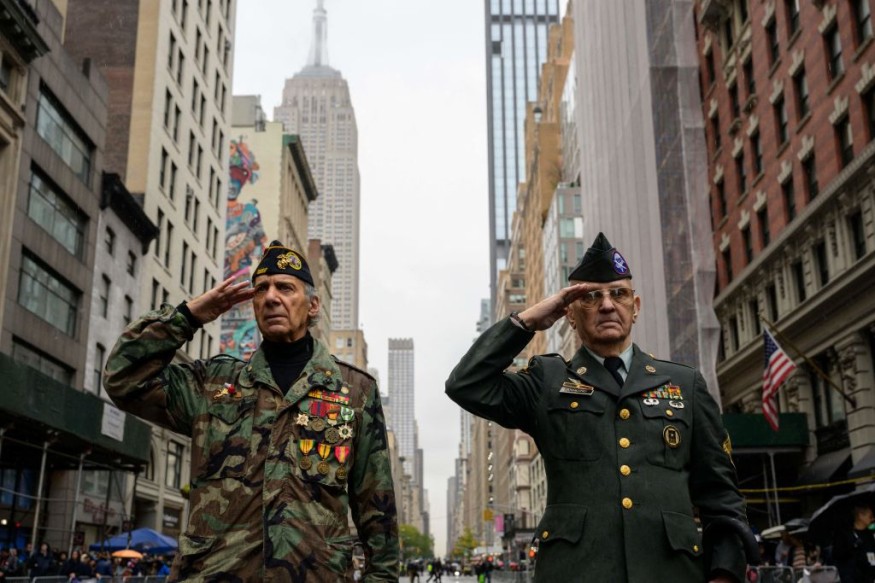Veterans Day: Things You Need to Know About This Important Federal Holiday

Veterans Day, featured on the United States calendar, clearly signifies its purpose - the rightful honor bestowed upon our military veterans.
However, the background information behind this annual commemoration, including its historical origins and key statistics about the veteran population, may not be as readily apparent.
Veterans Day is celebrated across the nation with resounding reverence, recognizing the sacrifices of those who have served in the Armed Forces.
Yet, amidst this well-deserved recognition, it's important to delve into the origins of this day and understand the current demographics of the veteran population.
READ NEXT : Joe Biden Celebrates Memorial Day
Veterans Day, not Veterans' Day
Many individuals commonly misinterpret the name of the holiday as "Veteran's Day" or "Veterans' Day," but this is not accurate, according to the US Department of Defense.
The apostrophe in these variations suggests ownership by a single veteran or multiple veterans, which is not the intent of the holiday. Veterans Day is a day dedicated to honoring all veterans, and therefore, no apostrophe is necessary.
Veterans Day Is Not Memorial Day
Many Americans often confuse these two holidays, which can be frustrating for living veterans.
Memorial Day is dedicated to remembering those who sacrificed their lives for our country, especially in battle or from battle-related injuries. In contrast, Veterans Day pays tribute to all who have served the nation in times of war or peace, whether deceased or alive, with a primary focus on expressing gratitude to living veterans for their sacrifices.
It Was Originally Called Armistice Day
World War I formally concluded with the signing of the Treaty of Versailles on June 28, 1919. However, hostilities ceased about seven months earlier when the Allies and Germany implemented an armistice at the eleventh hour of the eleventh day of the eleventh month.
As a result, November 11, 1918, marked the widely recognized end of "the war to end all wars," and it was named Armistice Day.
In 1926, Congress officially acknowledged this date as the war's end, and by 1938, it had become an established holiday primarily dedicated to honoring World War I veterans.
Subsequently, due to the occurrences of World War II and the Korean War, Congress, on June 1, 1954, responded to the appeals of veterans service organizations by modifying the commemoration, substituting "armistice" with "veterans" to encompass American veterans from all wars.
During this period, there were changes in the date of Veterans Day, leading to confusion.
To address this, Congress passed the Uniform Holiday Bill in 1968, aiming to schedule certain federal holidays, including Veterans Day, on Mondays. This shift was intended to promote travel and other family activities over extended weekends, stimulating economic activity.
There Are Roughly 19 Million US Veterans
According to the Department of Veterans Affairs, around 10% of the overall adult population is made up of veterans. During the Korean War, Vietnam War, and other terrible situations, our heroes defended their loved ones, friends, and all citizens.
They made it possible for us to have everything, but more significantly, they ensured us to live in peace, per ORCAM.
13% of All US Veterans Are Women
As per data from the Department of Veterans Affairs, a noteworthy 13 percent of all veterans are women, marking a record high that continues to increase annually.
While the conventional image of veterans often conjures thoughts of male heroes, it is essential to acknowledge the significant and growing contributions of women who have served their country with bravery and dedication.
This article is owned by Latin Post.
Written by: Bert Hoover
WATCH: A Veteran Is - Veterans Day 2022 - From Navy SEAL Foundation
Subscribe to Latin Post!
Sign up for our free newsletter for the Latest coverage!
© 2025 Latin Post. All rights reserved. Do not reproduce without permission.














